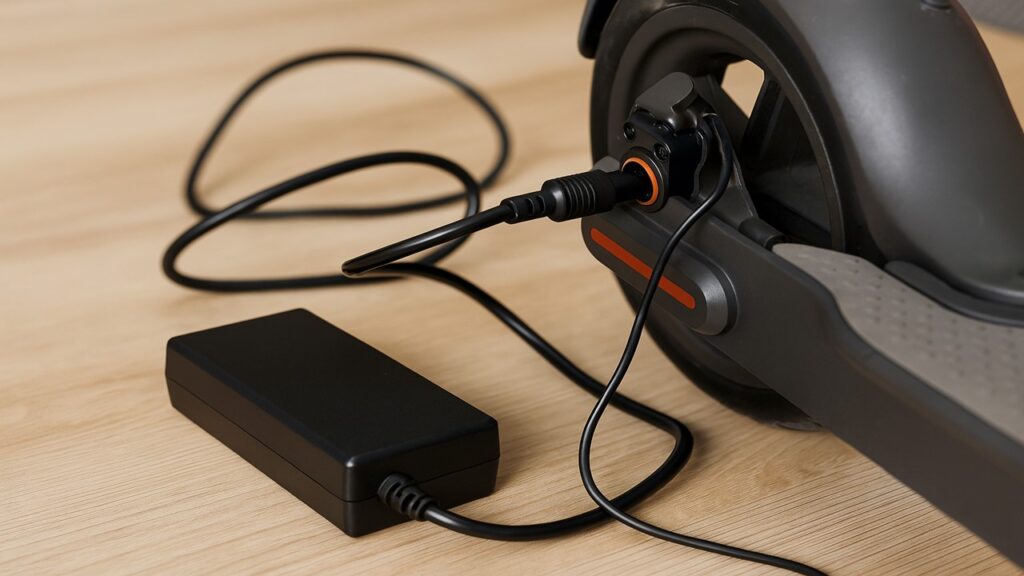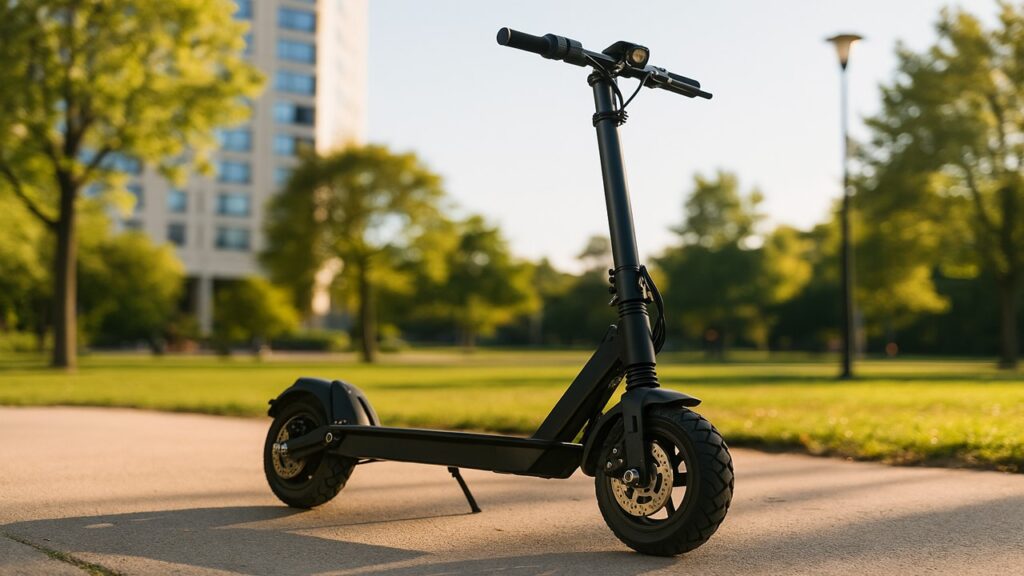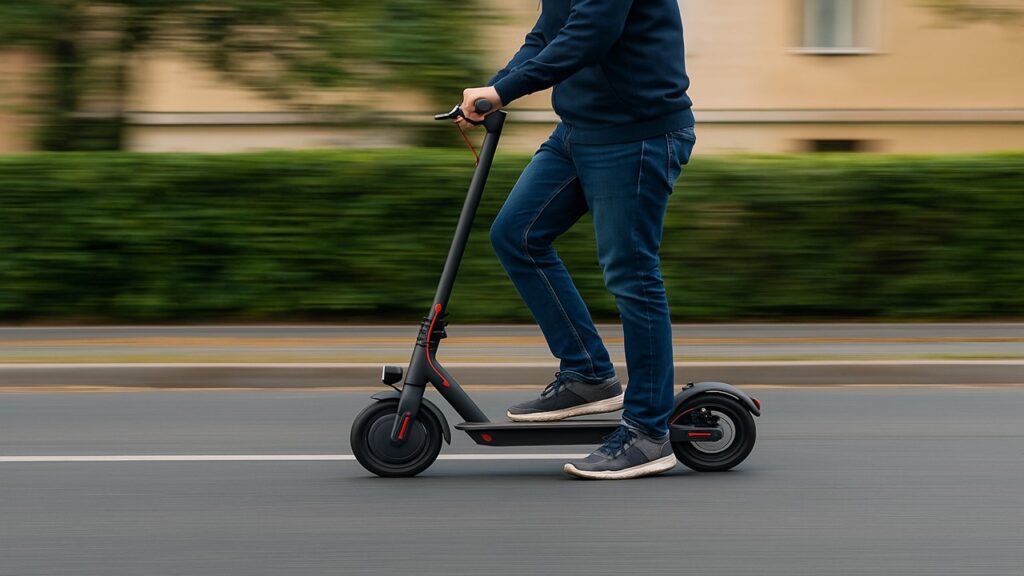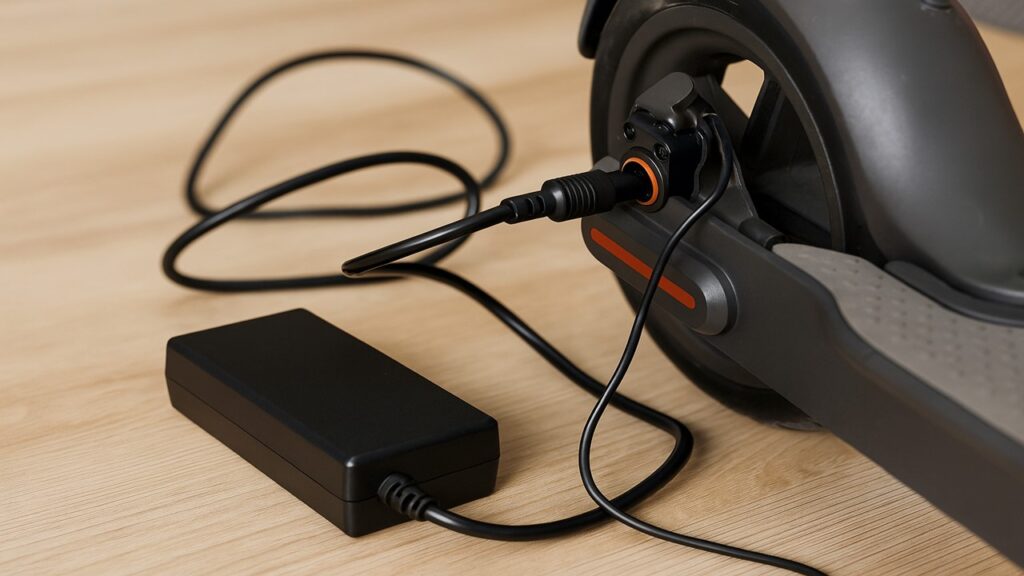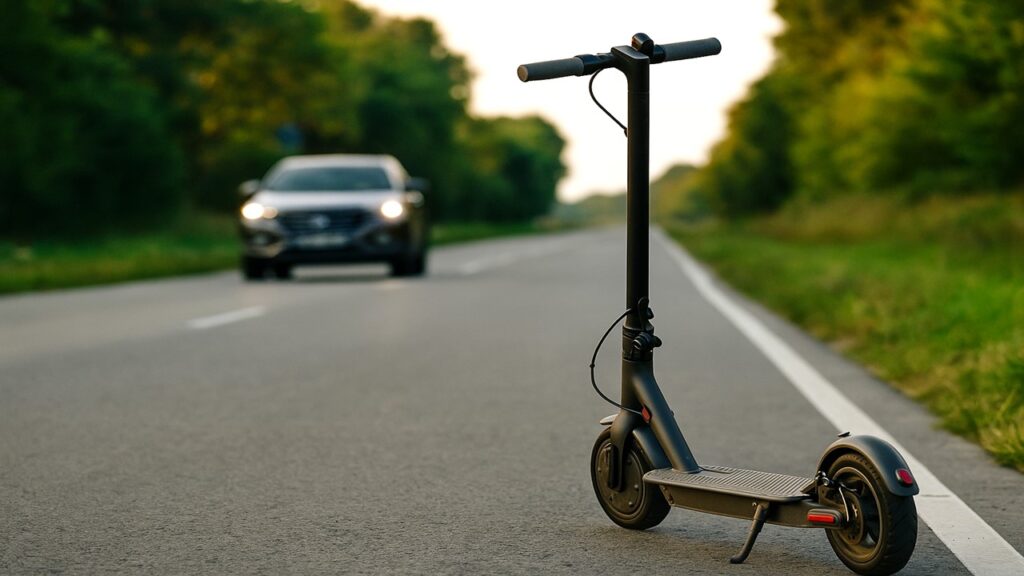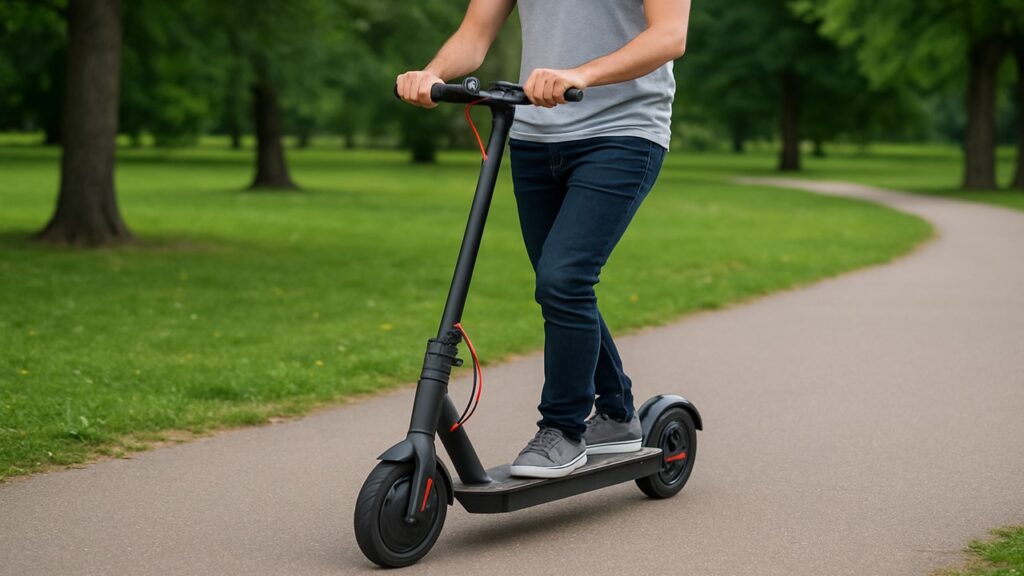
A fully charged electric scooter can last anywhere from 10 to 70 miles per charge, depending on the model, rider, and conditions. Most commuter scooters average 15 to 25 miles in real-world use, while long-range scooters can easily push past 40 miles.
Key Summary:
- Entry-level electric scooters typically travel 10–20 miles per charge, making them suitable for short trips and light use.
- Mid-range commuter scooters usually cover 20–40 miles, offering a reliable balance of range and affordability.
- Premium and long-range scooters can reach 40–70+ miles, designed for extended commutes or recreational riding.
- Real-world range depends heavily on rider weight, terrain, speed, and weather conditions, which often reduce mileage compared to advertised claims.
Average Range of an Electric Scooter on a Full Charge
For most riders, the expected range is not a single number but a spectrum. Entry-level scooters typically deliver shorter ranges because of their smaller batteries and motors. Commuter scooters strike a balance between weight, price, and performance, making them ideal for daily use. High-end long-range models are built with larger battery packs and dual motors, allowing them to cover much greater distances on one charge.
Another key difference is the gap between advertised and actual performance. Manufacturers often test scooters under ideal conditions — lightweight riders, flat terrain, steady speed — which does not reflect real city riding. That’s why real-world range is often 15–25% lower than the official claim.
Typical Scooter Ranges by Category
| Category | Motor Power | Battery Size | Range (Miles) | Price Range |
| Entry-Level | 250–350W | 36V, 7–10Ah | 10–20 miles | $300–$500 |
| Commuter (Mid) | 500–800W | 36–48V, 12–15Ah | 20–40 miles | $600–$1000 |
| Long-Range/Premium | Dual 1000W+ motors | 52–60V, 18–35Ah | 40–70+ miles | $1200–$3000+ |
How Long Does a Fully Charged Scooter Battery Last?
When people ask how long a scooter battery lasts, they’re often asking two different things: the distance per single charge and the battery’s overall lifespan. On a single charge, most scooters will give you anywhere from 10 to 70 miles depending on the class. But lifespan is measured in charge cycles — how many times a battery can be charged and discharged before its capacity noticeably declines.
Most lithium-ion scooter batteries last for 300 to 1000 full charge cycles, which usually equals 2–5 years of regular use. Over time, the maximum range will slowly shrink. For example, a scooter that once managed 25 miles may drop closer to 18–20 miles after a few years of use.
Factors That Affect Electric Scooter Range
The range of an electric scooter isn’t fixed; it’s shaped by several key factors that either extend or reduce battery efficiency.
Main factors include:
- Battery capacity (larger batteries store more energy)
- Rider weight (heavier riders use more power)
- Terrain (flat ground vs hills vs rough roads)
- Riding style and speed (steady vs aggressive acceleration)
- Temperature and weather (extremes reduce efficiency)
Let’s break these down more clearly.
Battery Capacity
The size of the battery, usually measured in watt-hours (Wh), sets the upper limit of how far you can go. A 250Wh battery might only cover 10–12 miles, while a 1000Wh pack can push 40–50 miles under normal conditions.
Rider Weight
A scooter carrying a 200 lb rider will consume more energy than one carrying 140 lb, often cutting range by 15–25%. Manufacturers typically rate their ranges for lighter riders, so heavier users should expect less distance.
Terrain
Smooth city roads maximize range, while steep hills or uneven surfaces drain the battery much faster. Climbing inclines requires more torque, which in turn pulls more power from the pack.
Riding Style and Speed
Scooters ridden aggressively at top speed or with frequent bursts of acceleration will see reduced mileage. A steady 12–15 mph cruise can sometimes add several extra miles compared to racing at 20–25 mph.
Temperature and Weather
Cold weather reduces battery efficiency, sometimes by as much as 20–30%. Heat accelerates long-term battery wear. Keeping the scooter stored in a moderate environment extends performance.
Electric Scooter Range by Type and Category
Different scooter categories are designed with different riders in mind.
- Entry-Level: Compact, affordable, short trips of 10–20 miles.
- Commuter: Balanced for urban riders, typically 20–40 miles per charge.
- Premium/Long-Range: Built for endurance, 40–70+ miles on large batteries.
Scooter Range Comparison by Category
| Scooter Type | Motor Power | Battery Capacity | Typical Range | Price Range |
| Entry-Level | 250–350W | 250–350Wh | 10–20 miles | $300–$500 |
| Commuter/Mid-Range | 500–800W | 500–750Wh | 20–40 miles | $600–$1000 |
| Long-Range | 1000–2000W+ | 1000–2000Wh+ | 40–70+ miles | $1200–$3000+ |
This comparison makes it easier to see how motor power, battery size, and price work together to set the range expectations.
Real-World Scooter Range Examples
While specs tell part of the story, actual rider reports provide a clearer picture of what to expect.
- Xiaomi M365: Rated at ~18.6 miles, most riders see closer to 15–18 miles.
- Segway Ninebot Max: Officially 40 miles, but real-world averages are 28–32 miles.
- Dualtron Thunder: Marketed as 75 miles, but most riders achieve 60–70 miles depending on speed.
Why do riders often report less than brochure claims? Because official numbers are tested under perfect conditions: a light rider, flat surface, and low steady speed. In real commuting, factors like hills, stop-and-go traffic, higher speeds, and rider weight all reduce range significantly.
How to Maximize Your Electric Scooter’s Range
Getting the most distance out of a single charge comes down to riding habits and basic maintenance. Even small changes in how you ride or care for your scooter can extend its range noticeably.
Key tips to extend scooter range:
- Maintain a steady, moderate speed instead of riding full throttle.
- Keep tires properly inflated to reduce rolling resistance.
- Avoid unnecessary weight such as heavy backpacks.
- Charge and store the battery correctly to prevent capacity loss.
- Stick to smooth, flat surfaces when possible.
Let’s break these down further.
Ride at Steady Speeds
Scooters consume more power when constantly accelerating or hitting top speed. Riding smoothly at 12–15 mph instead of racing at 20+ mph can add several extra miles per charge.
Keep Tires Properly Inflated
Low tire pressure forces the motor to work harder. By keeping tires at the recommended PSI (usually around 40–50), riders can improve efficiency and reduce unnecessary energy drain.
Limit Extra Load
Every pound of additional weight requires more energy to move. Minimizing heavy bags or cargo helps maximize range, especially for smaller scooters with limited battery capacity.
Charge and Store Battery Correctly
Batteries last longer when charged regularly and stored between 40–60% if unused for long periods. Avoid letting the pack sit completely drained, as this shortens overall battery life.
Prefer Smooth, Flat Routes
Hilly terrain or rough surfaces quickly sap battery power. Choosing flatter, smoother roads whenever possible extends the distance you can travel per charge.
Battery Lifespan vs Range Per Charge
A scooter’s range per charge refers to how far it can travel on a single full battery. This figure is what most riders care about day-to-day and is usually between 10 and 70 miles depending on the scooter type.
Battery lifespan, however, refers to how long the battery itself remains usable before losing significant capacity. Lithium-ion scooter batteries typically last for 300 to 1000 full charge cycles, which translates to about 2–5 years of regular use.
Over time, range gradually decreases as the battery ages. For example, a scooter that once delivered 25 miles per charge might only reach 18–20 miles after a few years. Understanding this distinction helps riders plan both their daily trips and their long-term ownership costs.
Choosing the Right Scooter Range for Your Needs
Not every rider needs a 70-mile scooter. The right choice depends on your commuting distance, riding habits, and budget.
General guidance for different riders:
- Short commutes (5–10 miles per day): Entry-level scooters are usually sufficient.
- Medium commutes (10–20 miles per day): Mid-range commuter models are better suited.
- Long-distance or frequent riders: Premium scooters with 40+ mile range are worth the investment.
When deciding, it’s wise to choose a scooter with about 20% more range than your daily requirement. This ensures you have a buffer for hills, traffic stops, or unexpected detours without running out of power.
Final Words
A fully charged electric scooter typically lasts between 10 and 70 miles, with most commuter models averaging 15 to 25 miles in real-world conditions. How far you actually get depends on battery size, rider weight, terrain, speed, and even the weather.
Daily range and long-term battery health are separate but equally important. By riding smart, maintaining your scooter, and selecting the right model for your needs, you can maximize both your per-charge distance and the lifespan of your battery.
FAQs
How many hours can a scooter last on one charge?
Most scooters last 40 minutes to 4 hours of continuous riding, depending on speed and battery size.
Do scooter batteries lose range over time?
Yes, all lithium-ion batteries lose capacity with age. Expect a 10–20% drop after a few years of use.
Can I upgrade my scooter’s battery for longer range?
Some models allow battery swaps or external packs, but most commuter scooters are limited to their built-in design.
How long does it take to fully recharge a scooter battery?
Charging usually takes 3 to 8 hours, depending on battery size and charger speed.
Which scooters last the longest per charge?
Premium long-range scooters like the Dualtron Thunder or Segway GT series often achieve 60–70+ miles on a single charge in ideal conditions.

Max Volt is an electric scooter and e-bike enthusiast who rides daily and knows the nuts and bolts of every model. With years of hands-on repair experience and real-world testing, Max shares practical reviews, maintenance tips, and buyer guides to help riders choose the right gear with confidence. His mission is to make electric commuting safer, smarter, and more enjoyable for everyone.






